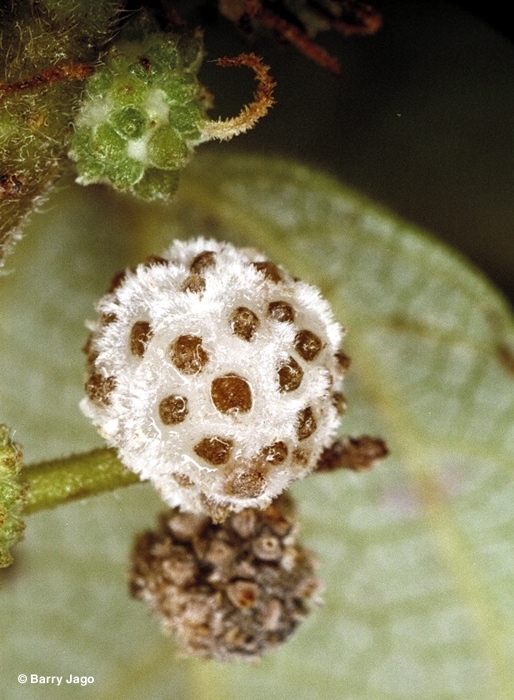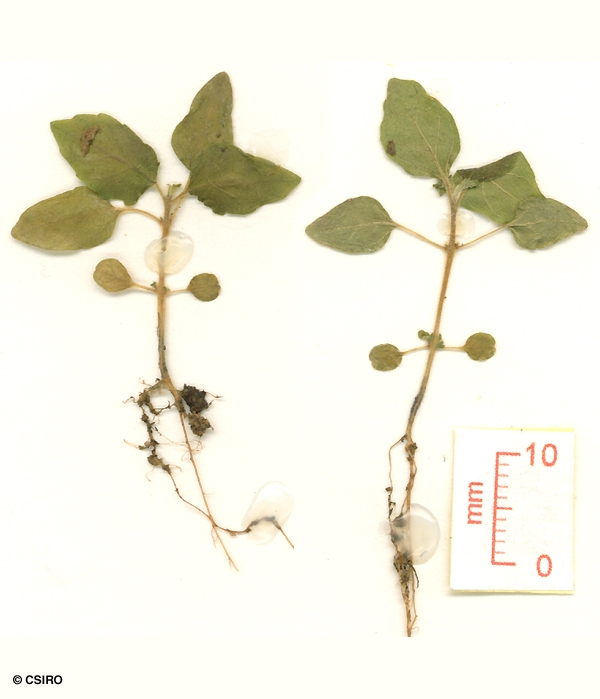Australian Tropical Rainforest Plants - Online edition
Pipturus argenteus (G.Forst.) Wedd.







Weddell, H.A. in Candolle, A.L.P.P. de (1869) Prodromus 16(1): 235.
False Stinger; Native Mulberry; White Mulberry; White Nettle
Seldom exceeding 30 cm dbh.
Leaf blades about 8-15 x 4.5-8 cm, almost white on the underside. Stipules triangular, about 6-7 mm long, produced between the petiole and the twig. Stipules fused, but free at the apex, tapering into two fine points. Young leafy twigs and petioles clothed in white, erect hairs. Twig bark strong and fibrous when stripped.
Male flowers: Flowers in globular clusters, perianth 1-1.5 mm long at anthesis. Anthers projecting well beyond the perianth at anthesis. Pistillode (rudimentary ovary) in the male flower consists of a tuft of hairs. Female flowers: Flowers in globular clusters. Styles about 2 mm long and quite hairy.
Cotyledons +/- orbicular, about 2-3 mm diam, minutely hairy on the upper surface, margin ciliate. First pair of leaves ovate, margin +/- entire. Both the upper and lower surfaces of the leaf blade clothed in white or pale-coloured hairs, visible with a lens. At the tenth leaf stage: leaf blade broadly ovate, apex acute, base rounded, upper surface scabrous from numerous, short hairs, basal pair of veins extend well up the leaf blade; stipules small, up to 3 mm long, visible with a lens. Petiole, stem and terminal bud hairy, clothed in white erect hairs. Seed germination time 14 to 93 days.
Occurs in NT, CYP, NEQ, CEQ and southwards as far as north-eastern New South Wales. Altitudinal range in northern Australia from near sea level to 900 m. Grows in various types of rain forest and wet sclerophyll forest. This species is favoured by disturbance and is a characteristic component of rain forest regrowth. Also occurs in SE Asia, Malesia and the Pacific islands.
Food plant for the larval stages of the White Nymph Butterfly. Common & Waterhouse (1981).
This species may have medicinal properties.
This species has been used medicinally in the Solomon Islands and New Guinea. Cribb (1981).





